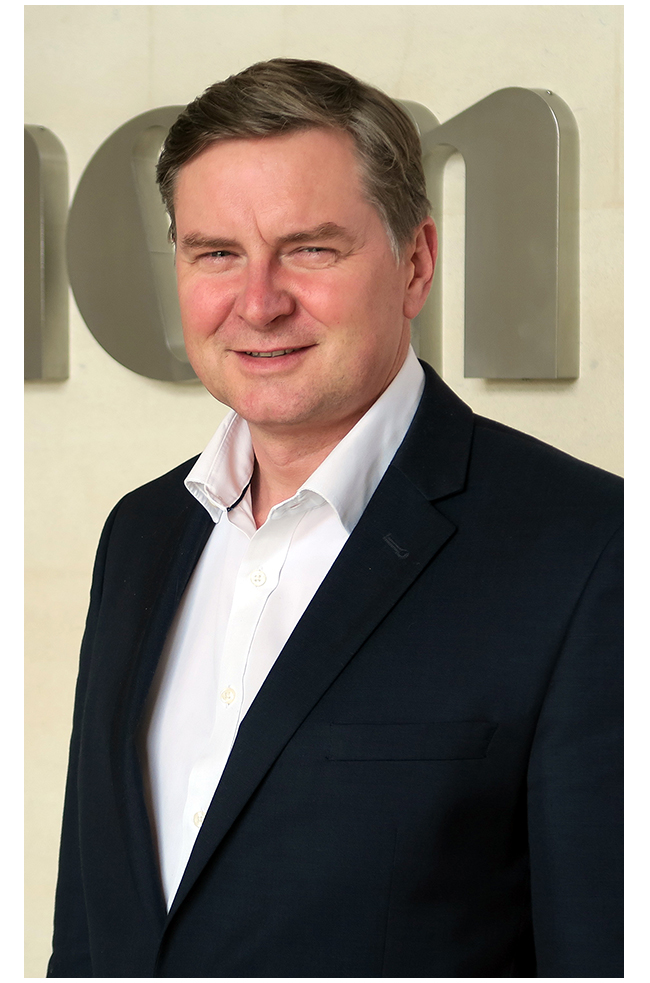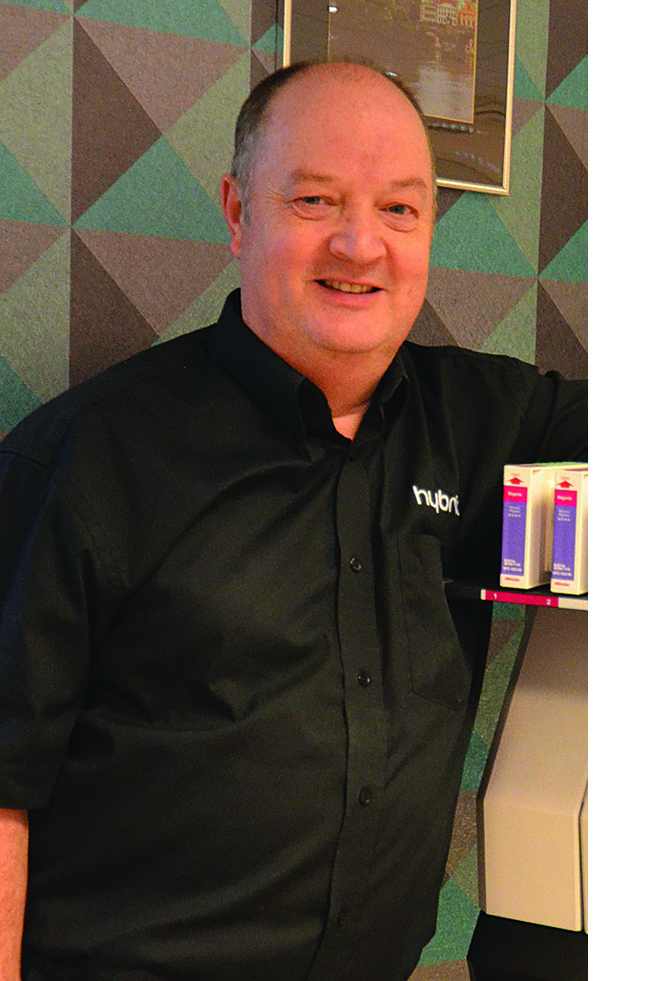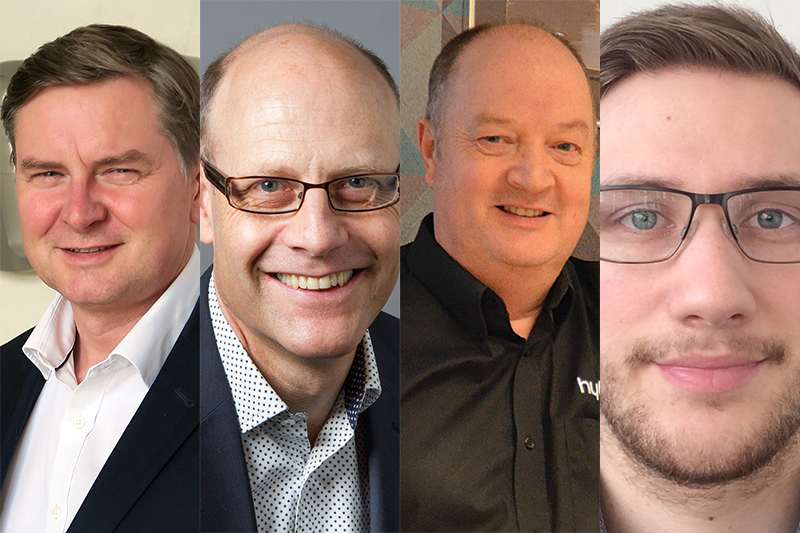The 2017 Widthwise Survey showed enormous disparity among PSPs when it came to environmental issues. But as brands demand an ever greener supply chain, what are the views of those that provide your print kit?
1 - Do you think the large-format digital print sector (in the UK) is becoming more/less environmentally aware?
2 - When talking to you about a potential kit purchase do PSPs ask questions pertaining to the environment (eg. how far do the parts/product travel, is it energy efficient etc). What are the main questions asked?
3 - Do PSPs ask you about your company’s environmental strategy? What do they want to know?
4 - What are your company’s key ‘green’ goals over the next two years?
5 - Fespa is upon us. What is your key environmental message to visitors?
 |
Dominic Fahy |
1 - Canon takes sustainability extremely seriously, as do most of our customers. Major brands increasingly expect and demand that their printers fully comply with the many regulations governing sustainability. In general, the wide-format sector in the UK is certainly becoming more aware of the importance of being environmentally aware. As part of a partnership and consultative approach with customers, our sustainability policy ensures that we not only meet, but also exceed customers’ needs.
2 - This is a very real consideration for many customers, particularly in public sector areas such as government contracts. So, in turn, PSPs need to know about Canon’s environmental credentials. The questions cover anything from where we source materials (based on our Green Procurement Standards) through to energy consumption and wide-ranging environmental policies.
3 - A lot of major brands, particularly retailers, have environmental policies which means that the signage and other printed output has to be responsibly produced. They expect us to ensure that we continue to have strong controls around compliance while also engaging on the need for social and environmental change. In demonstrating social and environmental benefits through our people and products, we are powerfully demonstrating our commitment to our philosophy of Kyosei: living and working together for the common good. For example, Canon has been operating a cartridge recycling programme since 1990. Each element of every returned toner cartridge is reused or recycled - be it as a component in a new toner cartridge, as a base material in other industries, or as a substitute for fossil fuels. No part of the toner cartridge is sent to landfill. 140
4 - We have strong systems in place to responsibly manage environmental impacts across our operations and supply chains. Canon operates a group-wide environmental management system, which is ISO 14001 certified at 184 sites in 25 countries across EMEA. By 2020 our target is to reduce our carbon emissions in Europe and Asia by 15% compared to 2010 levels. The lifecycle carbon emission from our products will reduce by 3% every year.
5 -Fespa will be the official launchpad for the Océ Colorado 1640, which is Canon’s first roll-to roll printer built on the revolutionary new UVgel technology first shown in March. UVgel uses no water, is a low-heat process and reduces ink consumption by up to 40%. The odourless and VCL-free prints satisfy the highest environmental standards for sensitive indoor uses.
 |
Ian Guest |
1 -From what we see and hear, there isn’t usually any discussion about the environment so it is difficult to say either way.
2 - We rarely encounter these sorts of questions - most of the time customers will ask power requirements but no more. Occasionally there are questions about the origin of components - the vast majority of which are sourced locally to our Swiss factory.
3 - It is very rare for us to be asked about our environmental strategy.
 |
Phil McMullin |
1 -Large-format digital printers, and indeed all printers, have remained sustainability conscious over the past few years despite sceptics who suggested that the recession would put the issue on the back burner. The reality is that the general public care about it and this means many leading companies put the environment at the core of corporate responsibility strategies. Today several print management companies have made ISO 14001 and other environmental credentials a prerequisite when placing some print jobs. The issue is not entirely altruistic; printers have found that being environmentally responsible can reduce wastes (energy, inks, papers, chemistry etc) and this saves money and improves margins.
2 - Obviously some care more than others but those who have undertaken ISO 14001 have to make continual improvements so are keen to be updated on environmental issues and to see how they can reduce energy, emissions, resource wastes, recycling costs. Printers ask questions that are either pertinent to a particular quote (which vary according to the buyer) or to see what they can do to cut their own manufacturing costs and impact on the environment. There is a lot more understanding these days so suppliers using ‘greenwash’ are not so likely to get away with it.
3 - Yes there is interest. They ask about Epson’s own environmental credentials but they are also keen to understand about the environmental impact they are making and how to measure and control it. Epson has published Sustainability Reports regularly since 1990. The one published last year showed year on year and decade on decade reductions:
- CO₂ emissions down 7% year on year (down 43% over the decade)
- PRTR emissions down 5% (down 54%)
- VOC emissions down 1% (down 52%)
- Waste down 6% (down 33%)
- Water use down 2% (55%)
The design and precision of our printers, means less energy use, less waste and less ink use. For example, the new SureColor S series printers use around 10-15% less ink than the previous generation. Likewise Paperlab launched at CebIT provides a virtually water-free method of recycling paper in-house (which also eliminates the transport and CO₂emissions). Likewise initiatives like the recycling of cartridges and the increasing use of cyber space to download software and applications is more environmentally sustainable.
4 - Efforts are ongoing and focus on the prevention of global warming, elimination of emissions and control of chemical substances. There is a push for year on year improvement and some longer-term goals; Epson wants to reduce its CO₂ emissions by 90% by 2050. It highlights three key aims: reforestation projects; energy control; and zero emission programmes. All its products are developed with an ecologically sustainable lifecycle in mind. “Better products for a better future” sums up its corporate social responsibility stance on the environment.
5 -Energy and inks will be the focus of the sustainability messaging. Six different SureColor models will be in action at the show and all have been developed by Epson to give print service providers a choice of flexible systems that tick all the boxes in terms of quality, running costs, flexibility, performance, ease of use and ability to maximise profits.
 |
John De La Roche |
1 - Environmental awareness is definitely increasing. More and more big brands are specifying environmentally friendly options, including recycled and recyclable materials and importantly eco inks. In order to win the work today, green credentials have to be considered.
2 - As manufacturers we ensure our customers are aware of the steps we’re taking to be more environmentally friendly. Our customers do ask questions. A typical question in the UK might be about ink conformity and the recycling of electrical components once a particular printer has completed its working lifecycle.
3 - Yes they do. Common questions relate to power requirements, development of new ink technologies and any part of the system that affects landfill. On the latter, Hybrid Services has a rebate-linked recycling scheme called ‘Let’s Do More’ which is accessible to anyone using genuine Mimaki solvent and eco-solvent inks in the UK. This is a popular scheme whereby we collect batches of used cartridges and dispose of them in a safe way to reduce environmental impact. Customers are rewarded with free ink cartridges for being part of the scheme. Many of them utilise the scheme because it increases their own green credentials.
4 - Mimaki’s environmental management system monitors and supports continuous improvement. This earned the company ISO 14001 certification in 2009. Within the next two years Mimaki plans to maintain, if not improve, its standards as well as to promote more environmentally-friendly manufacturing processes, technology, and product design.
In order to minimise its environmental footprint, Mimaki has taken several measures in its production process. It promotes recycling programmes, waste segregation, and thorough control of harmful chemicals to reduce industrial waste. It also makes every attempt to reduce its consumption of energy and resources such as electricity and fuel. It also has a “doing it right the first time” policy - reducing failure rate during manufacturing to eliminate waste and run a smooth production process.
5 - Mimaki will have a separate stand dedicated to the textile market at Fespa to reach out to visitors from the textile industry and introduce them to the benefits of digital textile printing. In recent months, Mimaki has launched a number of technologically-advanced textile inkjet printers one of them being the TX300P Hybrid. This entry-level model has the flexibility in one machine to print direct to the widest range of textiles. Utilising both textile pigment and sublimation dye inks in one machine reduces the amount of water usage. This is a perfect example of Mimaki’s innovation meeting today’s environmental requirements.

